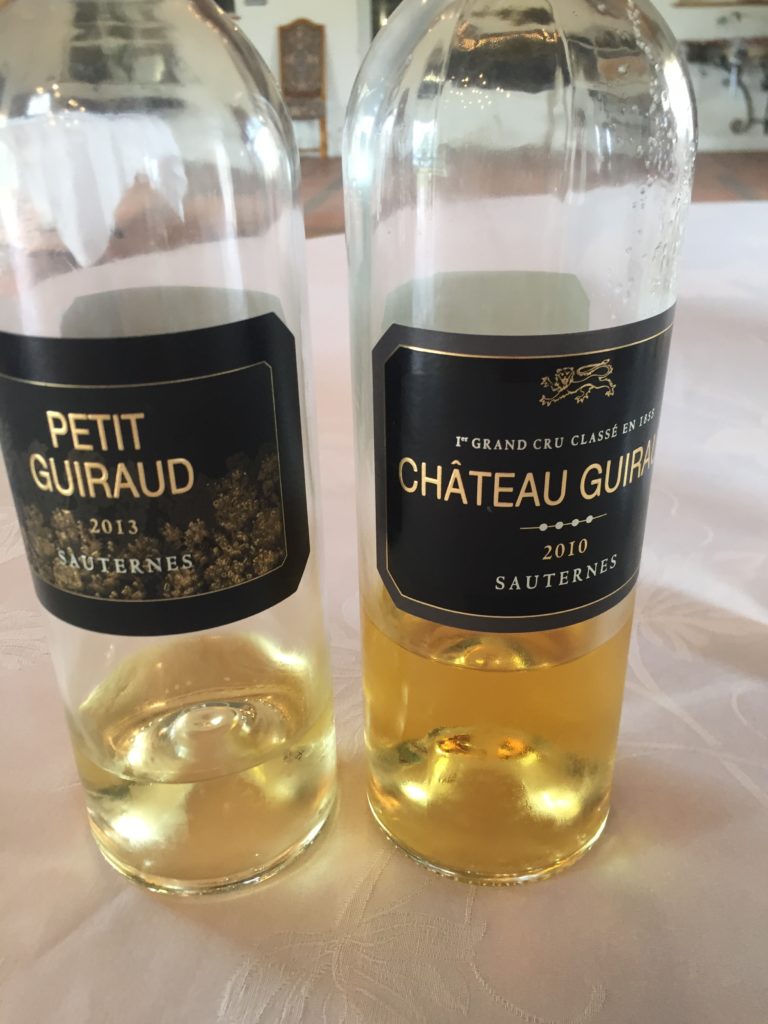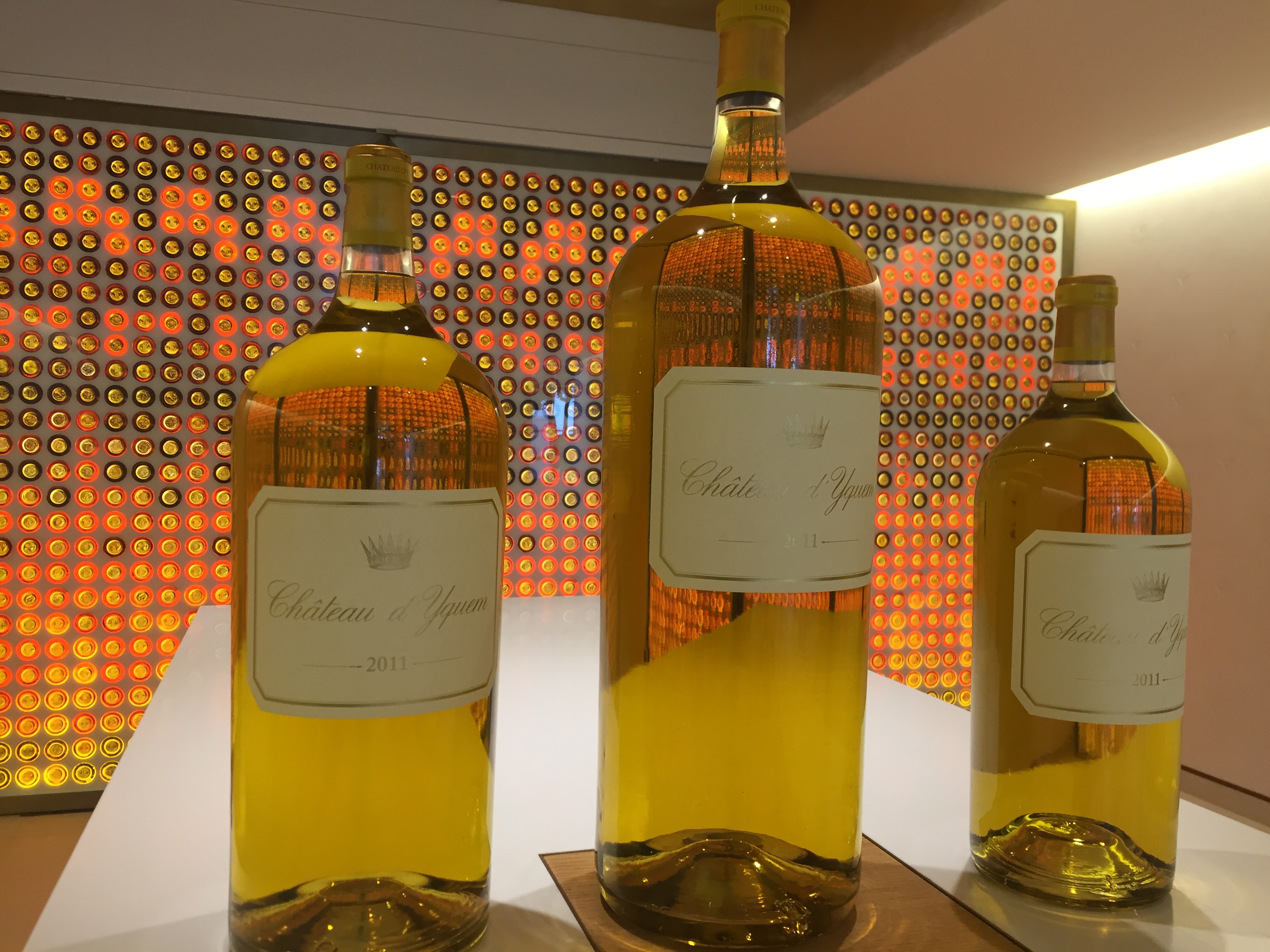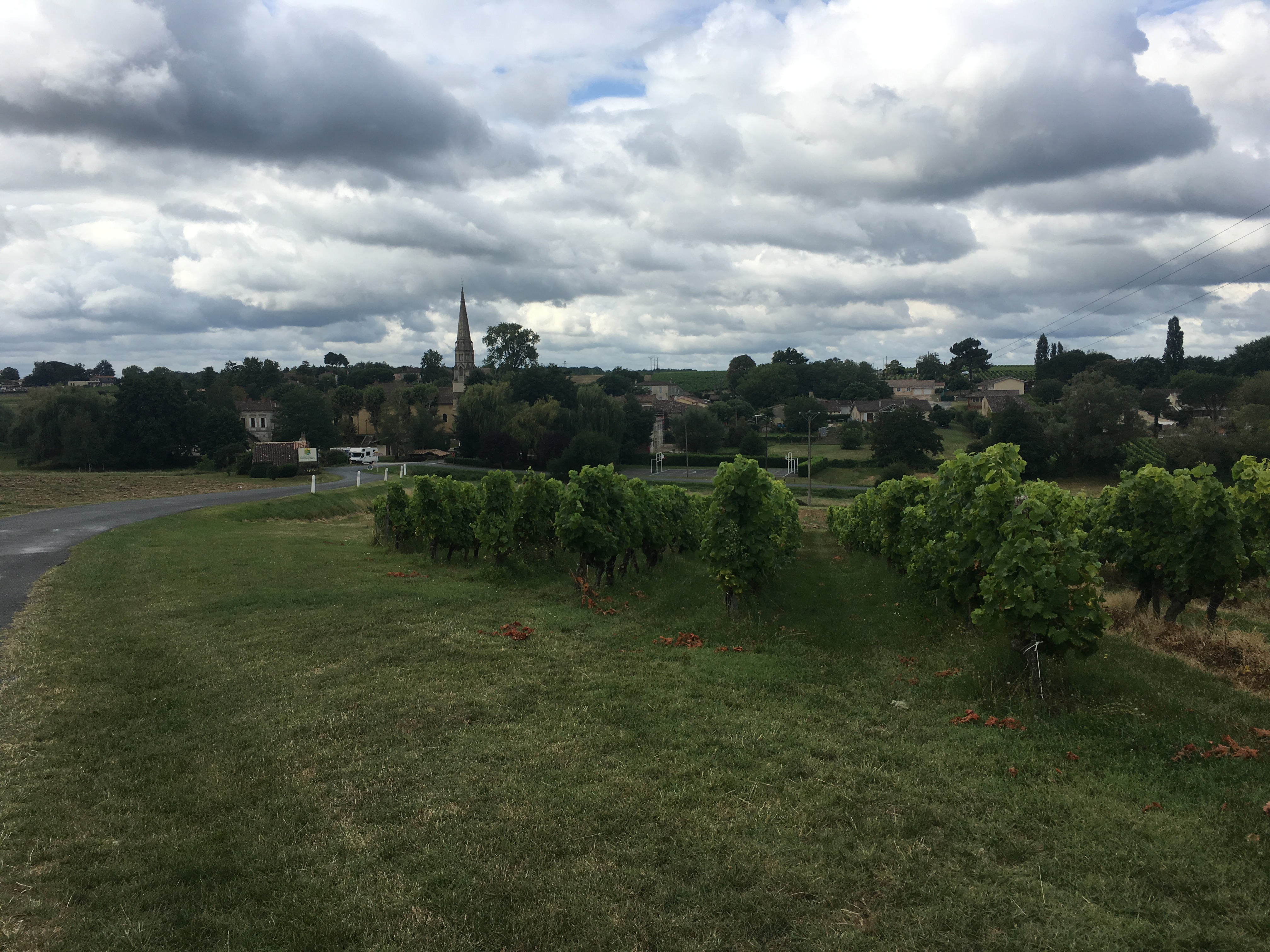ENGLISH VERSION AND PHOTOS BELOW!
Dopo avere mangiato uno dei più buoni hamburgers della mia vita, eccoci pronti per affrontare il Mito! L’appuntamento è per le 14, ma già alle 13.45 siamo a Chateau d’Yquem; ci accoglie però una strana sensazione, la location è spettacolare con uno splendido parco che circonda il Read More
Month: January 2019
Un giorno magico a Sauternes – Prima parte / A magic day in Sauternes – Part 1
ENGLISH VERSION AND PHOTOS BELOW!
Tappa obbligata del nostro viaggio a Bordeaux, Sauternes è quel tipico paesino di campagna francese dove non vedi anima viva in giro, come se fossero tutti concentrati a produrre quei grandi vini conosciuti in ogni angolo del mondo.
Per fortuna almeno c’è la piccola chiesa con accanto un comodo parcheggio, anche se una volta lasciata la macchina dopo pochi passi ci si rende conto che la passeggiata non potrà durare a lungo… Per fortuna, dopo una piccola salita, c’è un ufficio turistico ed entriamo subito per chiedere informazioni. Certo, alle 14 abbiamo già l’appuntamento clou a Chateau d’Yquem, ma siamo a metà mattinata e dovremo trovare un’alternativa per occupare il tempo nel migliore dei modi. La signora, gentilissima, fa un paio di chiamate e ci indirizza subito a Chateau Guiraud, che fa parte della lista degli 11 Premier Cru Classé definita per i vini di Sauternes nel 1855 (Chateau d’Yquem è l’unico “Superieur”) e che ha sulle spalle 250 anni di storia, visto che l’anno di fondazione è il 1766. L’accoglienza è calorosa, una ragazza ci aspetta e subito tende a puntualizzare che, grazie ad uno dei soci attuali, Monsieur Planty che gestisce lo Chateau dal lontano 1986, stanno lavorando già da qualche anno per creare un loro stile. Grazie al suo duro lavoro, nel 2011 hanno ottenuto per primi la certificazione ufficiale di agricoltura biologica e tendono a lasciare fare il lavoro alla natura, con l’impianto di siepi con vari tipi di piante, inerbimenti naturali fra i filari, nidi per uccelli e scelta di insetti impollinatori con installazione di alveari.
Dopo una veloce visita alla cantina, finalmente arriviamo nella sala principale pronti per la degustazione. La loro caratteristica è di avere una buona percentuale di Sauvignon (35%) ad accompagnare il classico Sémillon e presentano 3 tipologie di vino: Chateau Guiraud, Petit Guiraud e G de Guiraud.
- Chateau Guiraud 2010: è il vino di punta, Premier Cru Classé. I grappoli, ovviamente attaccati dalla botrite, vengono spremuti e fermentati in botti nuove per il 90% e successivamente il vino ha un affinamento in barrique da 18 a 24 mesi, resa 12hl per ettaro. Al naso subito profumi di miele, burro, frutta secca, caramello quasi tipo caramella mou. In bocca è estremamente vellutato, molto persistente e con un’ottima acidità che lascia pensare ad una lunga vita.
- Petit Guiraud 2013: lo definiscono come il lusso accessibile, visto il prezzo più popolare del fratello maggiore. La fermentazione avviene in parte in inox ed in parte in barriques, per affinare successivamente 12 mesi sempre in barriques. E’ meno complesso del primo (ci mancherebbe!), resa 15hl per ettaro. Si beve con molto piacere, grazie alla buona acidità che bilancia la dolcezza, non eccessiva. Sicuramente un vino valido, da bere anche in serate meno formali rispetto al fratello maggiore.
- G de Guiraud 2013: è il loro vino secco e presenta una percentuale di Sauvignon più alta, che arriva al 50%, lasciando il resto sempre al Sémillon. La fermentazione viene effettuata per circa l’80% nelle barriques di primo passaggio usate per il Premier Cru, poi segue un affinamento di 7 mesi sempre in barriques e sui lieviti. Profumi floreali e di frutta matura, buona persistenza ed ottima freschezza. Insomma è un vino bianco secco interessante, di buon livello.
Insomma, siamo stati molto contenti di questa visita, degno inizio di una giornata che si rivelerà indimenticabile! Abbiamo giusto il tempo per una sosta veloce per pranzo, ma dove? Sauternes non sembra offrire un granché… Invece, accanto alla piazzetta scorgiamo un cortile interno con un furgone colorato aperto, sembra proprio un food-truck! Infatti la scritta non lascia dubbi: “La cuisine de ma region est dans mon camion”, meglio di così! Una veloce ragazza bionda cucina soprattutto degli hamburger con il foie gras, per cui non posso esimermi visto che siamo nella patria dello stesso e dell’abbinamento con il Sauternes, anche se a sorpresa non è giudicato il massimo dai suoi stessi produttori. Erica invece proprio non riesce ad affrontare il foie gras, per cui sceglie il classico assiette di affettati e formaggi, ottimo anche quello. Insomma, direi che la sosta si è rivelata più gustosa di ogni più rosea previsione, per cui ora siamo pronti ad affrontare il mito Yquem. A breve il seguito dedicato alla visita del Mito!
ENGLISH VERSION
A must for our trip to Bordeaux, Sauternes is that typical French country village where you can’t see a living soul around, as if they were all focused on producing those great wines known in every corner of the world.
Fortunately at least there is the small church with a wide parking, even if once you leave the car after a few steps you realize that the walk won’t last long … Anyway, after a small walk, there is a tourist office and we immediately enter to ask for information.
Of course, at 2 pm Chateau d’Yquem is waiting for us, but we are mid-morning and we will have to find an alternative to spend our time in the best way. The lady, very kind, makes a couple of calls and immediately directs us to Chateau Guiraud, which is part of the list of 11 Premier Cru Classé defined for the wines of Sauternes in 1855 (Chateau d’Yquem is the only “Superieur”) and that has 250 years of history behind it, since the year of foundation is 1766. The welcome is warm, a girl is waiting for us and immediately tends to point out that, thanks to one of the current owners, Monsieur Planty who runs the Chateau since 1986, they have been working for some years to create their own style. Thanks to his hard work, in 2011 they first obtained the official certification of organic farming and their philosophy is to let Nature take its course, with the planting of hedges made up of different plant species, natural grassing between the rows, nesting sites for birds and special nesting hives have been installed to encourage the presence of pollinating insects.
After a quick visit to the winery, we finally arrive in the main hall ready for tasting. Their wines have a good percentage of Sauvignon (35%), while they use for the rest only the classic Sémillon. The winery produces three types of wine:
– Chateau Guiraud (2010): it is the flagship wine, Premier Cru Classé. The bunches, obviously attacked by botrytis, are pressed and fermented in new barrels for 90% and then the wine has an aging in barriques from 18 to 24 months, yield 12hl per hectare. In the nose immediately fragrances of honey, butter, dried fruit, caramel almost like toffee. In the mouth it is extremely velvety, very persistent and with an excellent acidity that suggests a long life.
– Petit Guiraud (2013): they define it as accessible luxury, thanks to the most popular price of the big brother. The fermentation takes place partly in stainless steel and partly in barriques, to then refine 12 months in barriques. It is less complex than the first, yield 15hl per hectare. You drink with a lot of pleasure, thanks to the good acidity that balances the sweetness, not excessive. Definitely a good wine, to drink even in less formal evenings than the older brother.
– G de Guiraud (2013): it is their dry wine and has a higher percentage of Sauvignon, which reaches 50%, leaving the rest always at the Sémillon. The fermentation is carried out for about 80% in the first-passage barriques used for the Premier Cru, followed by a 7-month refinement in barriques and on the lees. Floral and ripe fruit aromas, good persistence and excellent freshness. It is an interesting dry white wine of good quality.

In short, it has been a worthy start of a day that will prove unforgettable! We have just enough time for a quick stop for lunch, but where? Sauternes doesn’t seem to offer so much … Instead, next to the square we see an inner courtyard with a coloured van open, it looks like a food truck! In fact, the writing leaves no doubt: “La cuisine de ma region est dans mon camion”, better than that! A blonde girl especially cooking burgers with foie gras, so I can’t fail to see that we are in the homeland of the same and the pairing with the Sauternes, despite this parinig is not judged the most by its own producers. Erica, on the other hand, really can’t eat foie gras, so she chooses the classic “assiette” of cold cuts and cheeses, which is also excellent.
In short, I would say that the break proved to be tastier than any expectation, so we are now ready to face the Chateau d’Yquem myth. Stay tuned!


